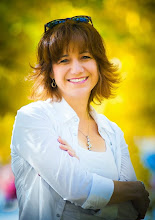 In my second Ken O'Connor webinar, 15 Fixes for Broken Grades, I believe I was able to confirm that much of what I already believe and practice in my own classroom is sound. I have questioned the way I teach, the way I pose questions, the way I assess and the way I report student achievement. I have summarized the essential learning outcomes from the various curricula I teach and students are aware of what and how they are learning as we explore the content. It is not about memorizing facts, but about understanding process. Science and Social Studies courses are not about facts and figures, but about skills needed to be that lifelong learner we are trying to help emerge.
In my second Ken O'Connor webinar, 15 Fixes for Broken Grades, I believe I was able to confirm that much of what I already believe and practice in my own classroom is sound. I have questioned the way I teach, the way I pose questions, the way I assess and the way I report student achievement. I have summarized the essential learning outcomes from the various curricula I teach and students are aware of what and how they are learning as we explore the content. It is not about memorizing facts, but about understanding process. Science and Social Studies courses are not about facts and figures, but about skills needed to be that lifelong learner we are trying to help emerge. This has led me to rethink not only how I teach, but what I teach as well. A research project on Ancient Egypt, for example, is not about knowing which date is associated to which specific event, but in leading the student to understanding the impact past events have had on the world. When students learn that some children were denied an education based on race or gender, they may appreciate the fact that they have infinite access to knowledge in a time and a place that values learning.
It's interesting that I felt much more involved in this second webinar by Ken O'Connor. Much of the information shared in the session was similar or repeated from the first one I viewed. This confirms for me, that if I understand more thoroughly a second or third time around, why would my students be any different? Although some students understand things the first time around, most need that repetition in order to help it sink in.
Many teachers are still not clear on the difference between formative and summative assessment. The example noted above shows how the formative part of learning is essential in allowing the student to gain the knowledge and comprehension required to be able to advance to synthesizing information received. Once they have had the opportunity to process the information (content) and the way they learn (metacognition), the student is an active participant in his or her learning because he or she is aware of the learning that is taking place. At this point, summative assessment can accurately evaluate that learning has occurred and to what extent.
I am anxious to continue going through my notes in order to allow my own learning to sink in about evaluation. I am already looking forward to putting into practice much of what I agree with from this webinar. More to follow.

0 commentaires:
Enregistrer un commentaire